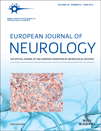Brain immunohistopathological study in a patient with anti-NMDAR encephalitis
Abstract
Background and purpose: Anti-N-methyl-d-asparate (NMDA) receptor encephalitis is thought to be antibody-mediated. To perform an immunohistopathological study of the inflammatory reaction in a brain biopsy performed before immunomodulatory treatments in a patient with anti-NMDA receptor encephalitis.
Methods: An immunohistochemical study was performed using CD3, CD68, CD20, CD138 and CD1a antibodies.
Results: Prominent B-cell cuffing was present around brain vessels accompanied by some plasma cells, while macrophages and T cells were scattered throughout the brain parenchyma.
Conclusion: These findings suggest that the B cells interact with the T cells and are involved in antibody secretion by the plasma cells.




